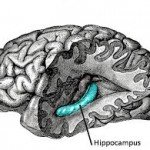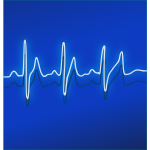Music & Neurosciences V – Blog 7 (Musical Emotions)
Hello Dear Reader
I hope you will forgive my lapse on the afternoon of Day 3. I was late staying at the poster session so I missed the start of symposium 7 on “The Beat” as a structured environment for movement, communication and socialization. This was a shame but having missed the start I decided to have a rest so that I was refreshed for the final session of the day.
 A little frayed but rested, I headed back for the final symposium of the day organised by Stefan Koelsch and Robert Zatorre on Music and Emotion. The symposium aimed to provide links between scientific research on the neural correlates of musically evoked emotions on the one hand, and therapy and rehabilitation on the other.
A little frayed but rested, I headed back for the final symposium of the day organised by Stefan Koelsch and Robert Zatorre on Music and Emotion. The symposium aimed to provide links between scientific research on the neural correlates of musically evoked emotions on the one hand, and therapy and rehabilitation on the other.
First, we heard from Stefan himself. I wrote a recent blog on his excellent review article on music and emotion so I won’t go too much into the detail. Suffice to say, emotion in music modulates a complex network or areas in the brain that are linked to the reward system.
However, there is one brain area of interest in particular to this talk as it is consistently activated by musical emotion but not by other primary rewards (food, sex) or secondary rewards (money, power) – the hippocampus
 Stefan links the hippocampal activation to the social rewards and functions of music, seven of which he identified in a recent paper.
Stefan links the hippocampal activation to the social rewards and functions of music, seven of which he identified in a recent paper.
The big 7 are 1) social contact, 2) social cognition, 3) co-pathy (empathy), 4) communication 5) co-ordination, 6) cooperation and 7) social cohesion.
Stefan’s conclusion was that the power of music to alter neuronal structures with such important links to social function means that it has potential as a treatment for disorders that are marked by dysfunctions of these same skills.
If you want a quick giggle then view this video of Stefan, which he used to start his talk. I can think of other ways to introduce the idea of the brain reward system but in none of these will see Stefan in a white coat pronouncing on the symptoms of One Direction fans… (https://www.youtube.com/watch?v=2SCyHaqKi50)
 The second talk of the symposium was provided by Robert Zatorre who went into further detail about his work on the activity of dopamine within the brain reward system.
The second talk of the symposium was provided by Robert Zatorre who went into further detail about his work on the activity of dopamine within the brain reward system.
He showed classic data that dopamine uptake in one brain area, the striatum, looks very similar when a person is listening to music or under the influence of narcotics.
As you might imagine, the science media just love this… http://cosmosmagazine.com/news/like-a-drug-music-induces-same-chemicals/
This work was followed up by more studies showing how the time course of our reward response (expectation and consumption of reward) is marked by different stages of dopamine release in the brain. I wrote about this finding for a previous blog: http://musicpsychology.co.uk/music-and-chills-the-brains-reward-system-in-action/
In the present talk Robert went on to discuss investigations of almost the opposite phenomenon – musical anhedonia – reduced pleasure in response to music.
 There are people who derive little pleasure from listening to music. They are not amusic (tone-deaf) but report that music does not please them. They are less likely to seek out music or be interested in its production. Interest in this phenomenon has lead to the development of the Barcelona Music Reward Questionnaire (BMRQ: 2013) – you can take the scale here – http://www.brainvitge.org/bmrq.php
There are people who derive little pleasure from listening to music. They are not amusic (tone-deaf) but report that music does not please them. They are less likely to seek out music or be interested in its production. Interest in this phenomenon has lead to the development of the Barcelona Music Reward Questionnaire (BMRQ: 2013) – you can take the scale here – http://www.brainvitge.org/bmrq.php
To date, the BMRQ has been taken by just over 850 people and Robert reported that about 5% of them meet a level of musical anhedonia.
 In tests these people show lower skin conductance to pleasurable music (less physiological arousal) and fewer changes to heart rate – yet they are not generally anhedonic as they show normal responses to an unexpected reward in a gambling task.
In tests these people show lower skin conductance to pleasurable music (less physiological arousal) and fewer changes to heart rate – yet they are not generally anhedonic as they show normal responses to an unexpected reward in a gambling task.
Musical anhedonia may represent a disconnection between a normal music processing system and the reward network.
Finally, we heard from Patrik Vuilleumier who talked about his work on the neural network underlying musical emotions. He studies the neural correlates of different musical emotions as measured using the Geneva Emotional Music Scale, the 9 factor version http://www.zentnerlab.com/psychological-tests/geneva-emotional-music-scales
Patrik has analysed the components of this scale and mapped the 9 elements of musical emotions into 4 simple quadrants. His research has uncovered distinct patterns of activation associated with these quadrants. I was not able to write them all down (there were a lot of brain images!) but they differentiate, for example, activity in motor and more sensory areas.
 It is nice to see the study of music and emotion moving into new areas and challenging assumptions, such as 1) music emotion response is mostly visceral, 2) everyone loves music and 3) musical emotions can be summarised on a few dimensions such as happy or sad.
It is nice to see the study of music and emotion moving into new areas and challenging assumptions, such as 1) music emotion response is mostly visceral, 2) everyone loves music and 3) musical emotions can be summarised on a few dimensions such as happy or sad.
In testing and pushing back these boundaries we move closer to an understanding of how musical interventions may one day be useful as ancillary treatments for emotion disorders.



4 Comments
Pingback:
Yune-Sang Lee
Dear Vicky,
I’m curious about the video (https://www.youtube.com/watch?v=2SCyHaqKi50) that Dr. Koelsh used for a quick giggle, but I can’t seem to access it.
Would you mind letting me know if there is other way of seeing the video ( please don’t go through any hassle if this is a tricky inquiry).
thanks for summarizing the music & neuroscience (wish I were there!) and I benefit greatly from your blog.
-yune
vicky
Hi – that YouTube link is the only access I have to the video I am afraid. You could contact Dr Koelsch directly and ask him for a copy of his video as part of the One Direction documentary? All the best, Vicky
Yune-Sang Lee
Ok. I’ll go ahead and contact him.
Thanks!